Introduction to Experian Mosaic customer segmentation
Customer segmentation is the process of dividing customers into groups based on common characteristics. We use Experian Mosaic customer segmentation data which classifies households into 15 groups (or 66 more detailed types) according to their demographic, socio-economic, lifestyle, attitude and consumer characteristics. It helps us to understand the specific strengths and challenges of different neighbourhoods. The Experian Mosaic website has more information about Mosaic data.
If you are working for Leeds City Council and would like to find out about the resources available, please contact Leeds Observatory
Pen portraits for Mosaic Public Sector Groups
Group A – Country Living
Key features• Rural locations |
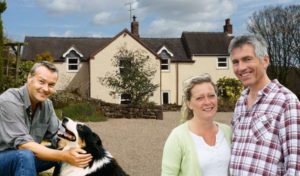 |
OverviewCountry Living are well-off homeowners who live in the countryside often beyond easy commuting reach of major towns and cities. Some people are landowners or farmers, others run small businesses from home, some are retired and others commute distances to professional jobs. Core FeaturesCountry Living consists of affluent people who can afford to live in pleasant rural locations surrounded by agricultural landscapes. This population is divided between those still in work and retired people. These people live in attractive, spacious detached homes that are often period properties or named buildings, and the majority are owned.Incomes are good, either derived from occupational pensions, commuting to well-paid professional jobs or running successful farms or their own businesses – Country Living contains the highest proportion of self-employed people of any group. Asset holdings in the form of stocks and shares are high. Living in the least densely populated rural locations means car ownership is high. Most households have at least two cars for tasks from grocery shopping, to doing the school run and commuting to work. Although broadband speeds may be low, the internet is used for practical purposes as it gives this group access to a broader range of products and services than are available locally. The latest technology is not high on their agenda and mobiles aren’t used extensively, probably due to less than reliable signals. Public SectorOn the whole Country Living are a reasonably environmentally aware group and people here are better than average at making the effort to recycle, reduce and re-use. Health among this group is good. Smoking is uncommon and they are the best group of all at eating five portions of fruit and vegetables a day – almost 50 per cent manage to do this. However, they are regular drinkers and the most likely group of all to drink every day. When it comes to taking part in sport or proactively keeping in shape they are no better than the average. The State Pension aside, Country Living have amongst the least need for support from the state. These rural folk live in areas with the lowest crime rate of all and there is little in the way of anti-social behaviour – Country Living are the most likely to feel that this is not a problem at all. However they do tend to be more concerned about speeding traffic. Not surprisingly, the fear of crime is very low indeed. |
|
Group B – Prestige Positions
Key features• High value detached homes |
 |
OverviewPrestige Positions are affluent married couples whose successful careers have afforded them financial security and a spacious home in a prestigious and established residential area. While some are mature empty-nesters or elderly retired couples, others are still supporting their teenage or older children. Core FeaturesPrestige Positions are well-educated couples who have reached senior and managerial positions in companies, or have accomplished professional careers. This is also the group most likely to have achieved success as directors of their own profitable businesses. Prestige Positions live in large family homes even though some of them no longer have children living at home. These are expensive detached properties, frequently with five bedrooms and large mature gardens in easily commutable locations. Of those whose children have grown up many are still offering support, either with a place to live in the family home, or by supporting them through university. For this group the continued financial support of their children is not a problem. Almost all own their own home, many outright and, in addition to sizeable salaries or large pensions, they have a substantial investment portfolio making their financial situation very comfortable. With busy lives to manage many make good practical use of the internet without spending long hours online. In particular they manage bank accounts online, search for savings accounts with the best interest rates, and save time by shopping online. In general, Prestige Positions are attracted to premium brands, are able to afford expensive holidays and are well insured often including private medical insurance. Public SectorWith their successful careers, Prestige Positions do not require financial support from the state, although a few retired people among them may access their State Pension. Smoking levels within this group are far below average – they are the least likely of all to smoke – yet in common with other affluent groups they enjoy drinking regularly. Thirty seven per cent of Prestige Positions drink two or three times a week – the largest proportion to do this of any group. However, being more active than many younger groups and more inclined than the average to eat ‘Five a day’, these professional people are in good health. They live in residential areas where the crime rate is low and anti-social behaviour is rare. They are, however, the group most likely to have a burglar alarm and live in an area with a Neighbourhood Watch scheme. Along with Country Living, they are the least likely to fear being a victim of crime. They have good levels of environmental knowledge and are more dedicated than most when it comes to recycling in particular. |
|
Group C – City Prosperity
Key features• High value properties |
 |
OverviewCity Prosperity work in high status positions. Commanding substantial salaries they are able to afford expensive urban homes. They live and work predominantly in London, with many found in and around the City or in locations a short commute away. Well-educated, confident and ambitious, this elite group is able to enjoy their wealth and the advantages of living in a world-class capital to the full. Core FeaturesCity Prosperity are found in senior and well-paid positions in the City’s key financial and professional organisations, as well as in high status roles in politics, media and the arts. Highly educated, very ambitious and focused on their careers, many of this group are single and are less likely than others to have children. Their homes are luxurious and often found in London’s most prestigious neighbourhoods and exclusive City and riverside locations. They are not always the most spacious homes though and are extremely expensive. Around half of these properties are owned, with many rented for, sometimes, astronomically high rents. Homes are often chosen because of their central locations and the easy commutes their locations offer to the office by underground or overground. Car ownership is consequently relatively low. Constantly connected via their smartphones, work-life takes precedence for many. They spend many hours online and couldn’t manage their lives without the internet. Frequent shopping online allows them to buy whatever they want efficiently, and price is less important than time. They shop at upmarket online grocery stores and book multiple trips abroad. They keep themselves informed with current affairs and read broadsheet newspapers. Public SectorCity Prosperity enjoy excellent health – nearly 58 per cent feel they are in very good health, the highest proportion of any group. Although with their work hard, play hard lifestyles they are more likely to drink regularly – nearly half often drink two to three times a week or more – they are less likely to smoke and are one of the few groups who are better than average at following healthy eating advice. They are also one of the most active groups when it comes to working out and keeping in shape. Despite living in prestigious neighbourhoods and luxurious developments, the areas where City Prosperity live do experience the highest levels of reported crime of all. Robbery and vehicle crimes, in particular, occur more frequently here. While they appreciate that the crime rate is higher than elsewhere, only a few more than average think that crime is a major problem in their neighbourhood and they worry less than many other groups about being a victim of crime. Their understanding of environmental issues is significantly greater than most, and while they do recycle, reduce and buy ethically, their green behaviour does not always match this level of knowledge. City Propensity have low levels of dependency on state financial assistance. |
|
Group D – Domestic Success
Key features• Families with children |
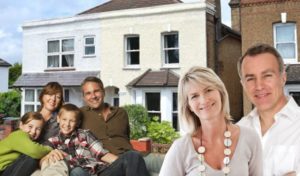 |
OverviewDomestic Success are high-earning families who live affluent lifestyles in upmarket homes situated in sought after residential neighbourhoods. Their busy lives revolve around their children and successful careers in higher managerial and professional roles. Core FeaturesFamilies in Domestic Success are headed by couples typically aged in their late 30s and 40s, many of whom have school age children. Parents in this group are the most likely to have a degree and may have delayed having children until their careers were established. They now live in good-sized three or four bedroom detached properties, owned with a considerable mortgage outstanding. Their lives are now settled and they have very comfortable standards of living. These are homes they can expect to stay in while their children grow up. Company car ownership is high, a benefit of working for well-known organisations or professional firms in sectors such as finance, property, information technology and professional services. Domestic Success are frequent internet users. As well as being constantly connected for work, they enjoy the time-saving convenience of banking, shopping and managing bills online. They love owning the latest technology and, in addition to smartphones, they are the most likely group to own tablets. Public SectorDomestic Success is a healthy group and is one of the more active when it comes to taking part in sport and keeping in shape. However, with busy, demanding jobs and many also juggling children and work these families are not always quite as healthy or active as they could be. While far fewer than average smoke, and more than average manage to follow healthy eating guidelines, Domestic Success do drink fairly regularly though rarely every day. The crime rate is below average in the residential neighbourhoods where they live and their fear of crime and of being a victim of crime is correspondingly low. They are a little more knowledgeable than people in general around key environmental issues and are more likely to adopt green behaviours at home. However, they are generally better at recycling and re-using than they are at making efforts to reduce their energy consumption. Domestic Success have low levels of dependency on the state. |
|
Group E – Suburban Stability
Key features• Older families |
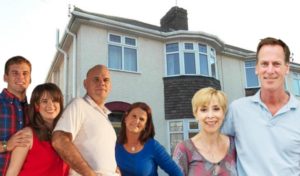 |
OverviewSuburban Stability are typically mature couples or families, some enjoying recent empty-nest status and others with older children still at home. They live in mid-range family homes in traditional suburbs where they have been settled for many years. Core FeaturesHouseholds within Suburban Stability are mostly headed by people aged between 45 and 65. A significant proportion are still supporting adult children who may be studying, looking for work or enjoying their parents help while they save money for their own future. Their typical home is a mid-range traditional three bedroom inter-war or post-war semi-detached house built for families in, what are now, established suburbs. These are settled households, most moved into their homes when their children were young, and the average length of residency is 17 years. Many years employment in a range of lower managerial, supervisory and technical occupations means that Suburban Stability have been able to afford to buy their own homes. Many have paid off the mortgage altogether and others have a relatively small amount left outstanding. Incomes within this group are respectable and lives are generally comfortable, though the pre-retirement empty-nesters will feel considerably better off than those whose adult children have not yet left, or have returned home. These families can feel stretched, particularly when the younger generation are not contributing to the household finances. As a group they are reasonably tech-savvy, though they do not rush to buy the latest gadgets. They access the internet daily via broadband and will use it for researching products and services. Public SectorComprising mainly older working couples and families, Suburban Stability have low levels of dependency on the state for financial support. The established suburbs where these residents live have a lower than average rate of crime compared to the UK as a whole, and instances of anti-social behaviour are rare. People appreciate that they live in a low crime area and accordingly do not generally worry about being a victim of crime. Suburban Stability are generally in good health. They smoke less than people in general and are fairly moderate when it comes to how frequently they drink. On the other hand, their adherence to a ‘Five a day’ diet is only moderate and their levels of exercise and participation in sport is only a little higher than the norm. Their understanding around key environmental issues is reasonable and they fare a little better than the population as a whole when judged on their green behaviours. |
|
Group F – Senior Security
Key features• Elderly singles and couples |
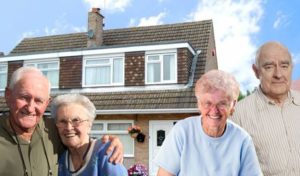 |
OverviewSenior Security are elderly singles and couples who are still living independently in comfortable homes that they own. Property equity gives them a reassuring level of financial security. This group includes people who have remained in family homes after their children have left, and those who have chosen to downsize to live among others of similar ages and lifestyles. Core FeaturesSenior Security is the most elderly group of all, their average age is 75, and almost all are retired. Some are living with their long-time spouse, but a larger number are now living alone, and women outnumber men. During their working lives Senior Security were employed in a range of managerial and intermediate occupations. They had sufficient income to buy their own homes with a mortgage which they have now paid off, leaving them with considerable equity in their homes. These homes are comfortable semi-detached three bedroom houses and bungalows in pleasant suburbs. They are generally very settled, long-standing residents of their local communities and have the longest length of residency of any group, having lived in their homes for nearly 25 years, on average. Though few now have high incomes, most live in reasonable comfort, their state pensions being supplemented by occupational pensions, and they are content with their standard of living. Senior Security are not fans of technology; they mostly have a pre-pay mobile for emergencies only and will only replace items when absolutely necessary. Public SectorConsidering their age, Senior Security are still able to enjoy good levels of health. While some do enjoy a regular drink, very few smoke at all and nearly half – over 30 per cent more than the average – eat their ‘Five a day’. In addition, although they no longer take a lot of exercise they do like to stay active and they are the least likely group to think they should do more to improve their health. The crime rate is lower than average where they live, as is anti-social behaviour of all kinds, and this group has a relatively low fear of crime. In contrast to their generally poor levels of understanding when it comes to issues such as climate change and carbon offsetting, Senior Security are amongst the most dedicated recyclers, re-users and reducers of energy use. However this tends to be done less out of environmental concern and more through a desire to save money and avoid unnecessary waste. These comfortably-off pensioners have little need for state support apart from drawing their pensions. |
|
Group G – Rural Reality
Key features• Rural locations |
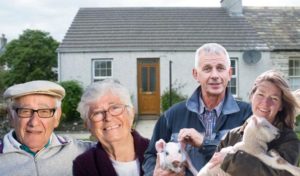 |
OverviewRural Reality are people who live in rural communities and generally own their relatively low cost homes. Their moderate incomes come mostly from employment with local firms or from running their own small business. Core FeaturesRural Reality are a mix of families, mature couples and older singles living in rural locations in lower cost housing. Some live in developments that have sprung up around villages, others in scattered hamlets or in remote communities. These tend not to be picture-postcard country properties, but more affordable two or three bedroom bungalows, semis or terraces often built post-war or more recently. Seventy per cent of this group own their own homes, while others rent from social landlords. Overall more people are employed than retired. Those employed may work in agriculture and related industries, or in local manufacturing or retail. People are more likely to have lower level supervisory roles, routine and semi-routine jobs than managerial roles. A relatively high proportion of these people are self-employed. Rural Reality are unlikely to use digital technology in their work, and slower broadband speeds can limit internet use at home. However they sometimes use auction sites for buying and selling items, and order groceries from mainstream supermarkets online. Satellite TV is popular as are local newspapers and local radio. Public SectorRural Reality is a group whose green behaviour contrasts somewhat with their level of environmental knowledge. While this group has less understanding of environmental issues than average, they are more likely to reduce energy use, re-use items and shop ethically when it comes to animal testing and the amount of packaging goods have. This largely working age group has average levels of good health. While they are generally less likely to drink and tend not to be smokers, those who do smoke are more likely to be heavy smokers. Fewer people do anything proactive to improve their health, work hard to keep in shape or play sports. Like others in rural areas, Rural Reality experience little crime where they live and they are rarely troubled by anti-social behaviour. Significantly fewer than average have a burglar alarm and they do not tend to worry about being a victim of crime in their homes or when out and about. Although some can find it difficult on their household income, Rural Reality have lower than average need to access support from the state. |
|
Group H – Aspiring Homemakers
Key features• Younger households |
 |
OverviewAspiring Homemakers are younger households who have, often, only recently set up home. They usually own their homes in private suburbs, which they have chosen to fit their budget. Core FeaturesAspiring Homemakers are typically younger families, couples who are yet to have children, and singles in their 20s and 30s. A good number are setting up homes for the first time. Couples can be married or more likely co-habiting, and where there are children they are usually of nursery or primary school age. Homes are likely to be semi-detached and terraced properties, modest in size but with three bedrooms and mostly owned; three-quarters of Aspiring Homemakers are in the process of buying their house with a mortgage. Most Aspiring Homemakers are driven by affordability when it comes to choosing where to live. They select either modest priced housing on newer estates, larger homes in better value suburbs that give them more space, or the least expensive homes in popular suburbs. The majority of Aspiring Homemakers are in full-time employment with a few part-time workers. The starter salaries they earn mean that most can manage their household budgets, but outgoings can be high so they appreciate the benefits of buying and selling on auction sites. Unsecured loans can help with larger purchases. They own smartphones, are keen social networkers, manage their bank accounts online and download a large number of apps. Public SectorAspiring Homemakers have a lower than average need to rely on the state for financial assistance. Aspiring Homemakers are in reasonable health. Only a small proportion, around a fifth, of people smoke, and those that do are more likely to be light smokers. While it is rare for them to drink every day, they do consume alcohol regularly, with nearly a third of this group having a drink two or three times a week. They are one of the poorest groups with regards to eating five portions of fruit and vegetables a day and although they are more active than people in general, they are on the whole less so than some other better-off young people and working families. Crime is lower than average where Aspiring Homemakers live, and they perceive fewer problems than the population in general with anti-social behaviour in their local communities. They feel safe in the suburbs and on the new estates where they live and worry less than average about being a victim of crime. They know a reasonable amount about environmental issues, without being especially knowledgeable, but are not always inclined to be particularly green at home. |
|
Group I – Urban Cohesion
Key features• Settled extended families |
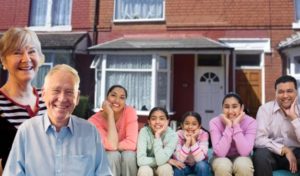 |
OverviewUrban Cohesion are settled extended families and older people who live in multi-cultural city suburbs. Most have bought their own homes and have been settled in these neighbourhoods for many years, enjoying the sense of community they feel there. Core FeaturesUrban Cohesion contains both families with school age and older children, and older people pre and post retirement. A good proportion are larger families who share their home with elderly parents or other family members. They live in accessible suburbs close to the centres of larger towns and cities. These are diverse neighbourhoods and a significant proportion of the population is of South Asian origin. Typical homes are Victorian terraced houses or pleasant semi-detached and terraced houses built between the wars. A minority live in more modern purpose built flats. Often Urban Cohesion’s homes are relatively expensive because of their central locations and proximity to London. The majority of people are homeowners, many without the need for a mortgage. Household incomes overall are moderate, derived from work in lower managerial, intermediate and semi-routine occupations. Many are technology fans and they like to have up-to-date gadgets and phones. They often use them extensively and have the second highest mobile phone bills of any group. Mobile and SMS are their communications preferences for most marketing contacts with organisations. However, they are more cautious about purchasing online. Public SectorOverall, the urban areas where people in this group live experience the highest crime rate of all. Robbery, drugs crime, violent crimes and vehicle crime are all more likely to be reported here than elsewhere. The fear of crime amongst Urban Cohesion is also higher than average. While it is still an issue they are less likely than some other groups to be very troubled by anti-social behaviour. Urban Cohesion have a slightly above average dependence on the state for support, but are significantly less likely than others to access disability allowances or the State Pension. They are in reasonably good health and although fewer than average smoke, those that do are more likely to be heavy smokers. As a group, they are less likely to drink than any other group. While they are better than average at participating in sport and taking exercise, overall they do not undertake high levels of activity. Urban Cohesion have reasonable levels of knowledge with regards to the environment, but are slightly less green than average in their behaviours. They are more likely to be environmentally friendly where being so can save them money. |
|
Group J – Rental Hubs
Key features• Aged 18-35 |
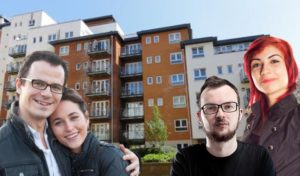 |
OverviewRental Hubs contains predominantly young, single people in their 20s and 30s who live in urban locations and rent their homes from private landlords while in the early stages of their careers, or pursuing studies. Core FeaturesRental Hubs represent an eclectic mix of students and young people with budding careers and more mundane starter roles. They live in urban locations in housing that attracts many young people, and most have yet to settle down with a partner or in a home of their own. Rental Hubs are usually found in or close to the centres of the UK’s major cities. They are four times more likely than average to rent their home from a private landlord, with a minority purchasing their homes as a first step on the housing ladder. Homes are purpose-built developments of small flats or older terraces. Around half of Rental Hubs have been at their address for two years or less. In addition to students, those in Rental Hubs work in administrative and technical roles or are climbing the corporate ladder in professional or managerial roles. A smaller proportion works in lower supervisory jobs or in service roles in bars, restaurants or hotels, particularly in London. Having grown up in a digital environment, these people are used to accessing news and information via their digital devices and Rental Hubs have a very high level of smartphone ownership. The internet is the first port of call for information; they are very active on social networking sites and spend a lot of time online. They are less likely to spend much time watching television. They are generally ambitious, keen to further their positions and adventurous in trying new things. They are likely to take note of an organisation’s ethical and environmental credentials. Public SectorWhile the young people in Rental Hubs are more likely than most to say they would pay more for environmental goods or make lifestyle changes to benefit the environment, in reality their green credentials are limited. They are less likely than the norm to recycle, save on energy and water use or re-use items. People in this group have a relatively low financial dependency on the state, apart from a few who access Job Seeker’s Allowance. Being young, they are in good health; there are more smokers among them than average, but most tend to be light smokers. They do tend to drink, but are not the most frequent drinkers and they try to keep in shape, being more likely than most to play sports. The urban and student areas where they live have a far higher crime rate than average, with robberies twice as often reported here. People are more likely to have issues with anti-social behaviour, especially noisy neighbours and rowdy behaviour. However, Rental Hubs’ fear of crime is in marked contrast to this; they worry less than the population in general about being a victim of crime. |
|
Group K – Modest Traditions
Key features• Mature age |
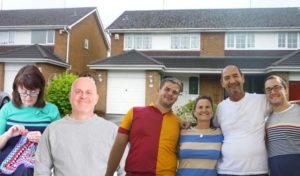 |
OverviewModest Traditions are older people living in inexpensive homes that they own, often with the mortgage nearly paid off. Both incomes and qualifications are modest, but most enjoy a reasonable standard of living. They are long-settled residents having lived in their neighbourhoods for many years. Core FeaturesModest Traditions consists of people aged mostly between 46 and 65 who have worked hard to buy their own homes and are now benefiting from that decision. They live in older two or three bedroom terraced or semi-detached homes, some bought from the local council. They are a combination of single people, married couples and families with grown-up children still living at home. Where children are able to contribute to the family income they are likely to be better off than their neighbours. Modest Traditions tend to work in lower level jobs, perhaps in skilled trade occupations for which an apprenticeship was as useful as a degree, or in administrative or customer service jobs. When shopping they tend to be focused on what they want and are not easily distracted. However at the supermarket they are the most likely to notice offers and advertising on trolleys and shelves. Modest Traditions aren’t generally up-to-date with the latest technology but many will have mobiles for basic communication and will make some use of the internet for information. Public SectorModest Traditions are a group with an above average level of dependency on the state for financial support. This group suffers less from poor health than other lower income groups and families, although their health is average at best. They are more likely to smoke than is typical amongst the population as a whole, but are infrequent drinkers. Modest Traditions are not particularly active, they don’t exercise much or take part in sport. While these generally older people have lower levels of knowledge than most when it comes to the environment, they do show some tendency for being environmentally friendly and recycling, re-using or reducing energy waste. In the neighbourhoods where Modern Traditions live the crime rate is a little above average and there are issues with anti-social behaviour. Their concern around being a victim of crime is fairly typical of the country as a whole. However, this group is amongst the least likely to feel confident in the fairness and effectiveness of the criminal justice system. |
|
Group L – Transient Renters
Key features• Private renters |
 |
OverviewTransient Renters are single people who pay modest rents for low cost homes. Mainly younger people, they are highly transient, often living in a property for only a short length of time before moving on. Core FeaturesHouseholds in this group are typically aged in their 20s and 30s and are either living alone or homesharing. Very few people are married and there are few children. Properties are often older terraced properties, primarily rented from private landlords with a few social landlords. They include some of the lowest value houses of all, and with tenants moving on quickly and paying low rents, private landlords are often not inclined to invest in improvements. Many work full-time, however their lower skilled jobs mean that incomes for Transient Renters are often limited. Others may be trying to improve their situation by studying for additional qualifications. This group are the most reliant on their mobile phones, saying they couldn’t manage without them. They are the most prolific texters, and frequently check social networks and download music. They have the lowest use of landlines. Public SectorThe generally young singles and homesharers in this group have high levels of dependency on the state for support, in particular with benefits to help them find employment or to supplement their low incomes. Levels of poor health are higher than average, and this group contains the highest proportion of people who smoke. They enjoy a drink, although they are by no means the most regular drinkers. However, they are the least likely of all to follow health advice around eating enough fruit and vegetables. This group is more likely to take part in sport than keep fit by other forms of exercise, although they are not especially active at either. This is the least environmentally conscious group of all, and with other challenges to face, comparatively little focus is given to helping the environment. Crime is above average where Transient Renters live and they are one of the groups most likely to experience issues with anti-social behaviour. As a result, the fear of crime within this group is also higher than amongst the population in general. |
|
Group M – Family Basics
Key features• Families with children |
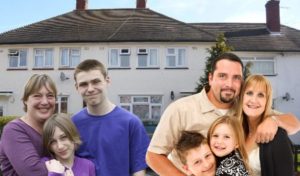 |
OverviewFamily Basics are families with children who have limited budgets and can struggle to make ends meet. Their homes are low cost and are often found in areas with fewer employment options. Core FeaturesTypically aged in their 30s and 40s, Family Basics consists of families with school age children, whose finances can be overstretched due to limited opportunities, low incomes and the costs of raising their children. In addition to younger children, some families also continue to support their adult offspring. While many households are headed by a couple providing two incomes, a small proportion are lone parent households. Homes are typically low value and may be located on estates or in pockets of low cost housing in the suburbs of large cities and towns. They are usually three bedroom terraced or semi-detached houses, often dating from between the wars or from the 1950s and 1960s. Most people have lived in the area for many years. A proportion of the working families have pushed themselves to buy their low cost homes, but more than half rent their home from social landlords. Limited qualifications mean that people can struggle to compete in the jobs market, and rates of unemployment are above average. Employment is often in low wage routine and semi-routine jobs. As a result many families have the support of tax credits, but significant levels of financial stress still exist. Families will take budget holidays to give the children an opportunity of getting away. Red top newspapers are popular sources of information. They send a large number of texts every day and are keen social networkers. Public SectorLiving on tight budgets, the often overstretched families in Family Basics depend on higher than average levels of financial assistance from the state. They are one of the most likely groups to need to top up their incomes with Income Support. With other priorities to focus on, this group is one of the least likely to recycle or re-use items or particularly try to save energy or water. Their level of environmental knowledge is also lower than most. The areas of low cost housing where Family Basics live have a crime rate that is just slightly higher than average, but these residents are more than twice as likely to feel that anti-social behaviour is a problem in their neighbourhood. Their fear of being a victim of crime is also higher than the norm and they are the group with the least confidence in the police and in the Criminal Justice System. Poor health is more common here than amongst the general population, with people more likely to smoke and less likely to follow a healthy diet, exercise or play sport to keep in shape. Parents in this group do enjoy a drink, but do so less often than many others. |
|
Group N – Vintage Value
Key features• Elderly |
 |
OverviewVintage Value are elderly people who mostly live alone, either in social or private housing, often built with the elderly in mind. Levels of independence vary, but with health needs growing and incomes declining, many require an increasing amount of support. Core FeaturesVintage Value consists of pensioners with an average age of 74, and most are now living alone. Women outnumber men because of their longer life expectancy. Some still live in homes they have rented from the council for many years, while others have moved, more recently, into specialised accommodation or small housing developments as their independence has decreased. Typically people in Vintage Value live in small houses and flats, frequently with one or two bedrooms. While the majority are long-term social renters, a third are owner occupiers – a mix of people who have purchased flats and others who exercised their right to buy their home from the council. Before they retired Vintage Value often worked in skilled manual occupations or routine jobs. The majority are now dependent on state pensions, only a few have additional income from an occupational pension. As a result, incomes are generally very low, but they spend money carefully to keep within their budgets. Take up of technology from mobile phones to internet services, is very low and they prefer traditional methods of communications such as post and landline calls. They often watch many hours of television in a week and enjoy listening to local radio. Public SectorAlthough levels of independence and income vary within this group, Vintage Value do in general have a higher than average level of dependency on the state for financial assistance. The areas of housing in which they typically live have a slightly higher crime rate than average, and residents do experience some issues with anti-social behaviour. While these elderly people tend to feel safe at home and are only a little more worried than average about being a victim of crime generally, they are the most likely to feel unsafe if out alone at night. Vintage Value suffer the most from poor levels of health. They smoke only a little more than average, but almost half of those that do are heavy or medium smokers. However, they drink less often than other groups and are better than many at eating five portions of fruit and vegetables a day. These days they rarely take any exercise. They are the least environmentally aware group. However, while they tend not to recycle they are willing to do things that save them money, such as re-using items and cutting down on their energy use. |
|
Group O – Municipal Tenants
Key features• Social renters |
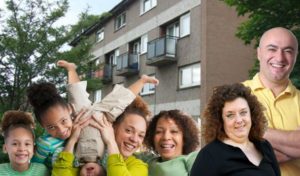 |
OverviewMunicipal Tenants are long-term social renters living in low-value multi-storey flats in urban locations, or small terraces on outlying estates. These are challenged neighbourhoods with limited employment options and correspondingly low household incomes. Core FeaturesPeople in Municipal Tenants are typically of working age. There are some families with children, but most are singles. Many have been renting their flats for a number of years. These are often multi-storey or high-rise blocks built from the 1960s onwards. Those in houses on estates have been settled there for a long time. These neighbourhoods suffer from high levels of unemployment, and incomes can be particularly low. Those in work tend to be in manual or low level service jobs. People are the most likely to be finding it difficult to cope on their incomes and they often receive benefits. Municipal Tenants contains the highest proportion of people without a current account. They have a low take up of financial products but may use short term finance occasionally. Given their income and urban location, car ownership is very low. Generally, ownership of technology is not high, but mobile phones are important and are the preferred means of contact. On average they spend more time watching television than they do on the internet and they prefer making purchases in local shops than buying online. Public SectorLiving in areas of high levels of unemployment and with low incomes, Municipal Tenants are in need of a high degree of financial assistance from the state. They are the most likely group to access Job Seeker’s Allowance, Income Support and benefits related to disability and incapacity. Some have health issues, and levels of poor health are only higher among the very elderly. Significantly more people than average smoke and Municipal Tenants are the most likely – over two and a half times as likely in fact – to be heavy smokers. While they drink less than average, they also have amongst the lowest levels of exercise and fewer than average follow a healthy diet. They live in areas where the level of crime is high, although not always the very highest. Common crimes are across the board, from public disorder through to robbery and violent crime. Municipal Tenants are the most likely to think crime and anti-social behaviour has increased a lot and is a big problem in their neighbourhood. They are also the most likely to be worried about being a victim of crime. The environment and trying to be green is not really a concern for this group. |
|
